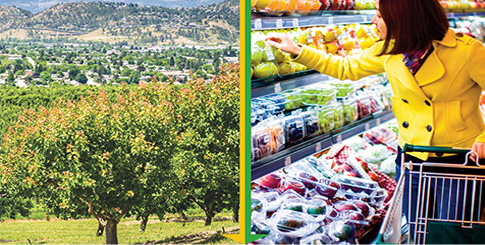Manitoba
Just west of Ontario, Manitoba stretches from the northern Arctic tundra to Hudson Bay in the east. Although the province’s primary crops have long been wheat and barley, the soil and climatic conditions in the province’s southern and western regions are ideal for cultivating potatoes.
Home to more than 80,000 acres of potatoes, including more than 24 varieties, Manitoba claimed 21 percent of Canada’s total potato production in 2016, second only to Prince Edward Island.
Manitoba’s commercial potato industry is divided into the usual three categories, producing for the fresh, processing, and seed potato markets. Three major processors in Manitoba employ over 1,000 workers and are responsible for half of the country’s potato processing volume each year.
The province’s farmers also harvest a variety of other field vegetables including carrots, onions, cabbage, cauliflower, sweet corn, and broccoli. Total farm gate value for Manitoba-grown vegetables reached nearly $15.7 million in 2016.
Yukon, Northwest Territories, Nunavut
Located in northern Canada, Nunavut, Yukon, and the Northwest Territories have long, harsh winters thanks to their arctic and subarctic climates. Consequently, these provin-ces and territories have minimal fruit and vegetable production.
Although there are very few farm operators in Yukon and the Northwest Territories, these numbers are increasing. According to Statistics Canada, farm operators in Yukon and the Northwest Territories rose to 234 in 2016, a 2.6 percent increase from five years earlier in 2011.
More than one-quarter of all farms in Yukon and the Northwest Territories reported growing field crops, with oats dominating. Fruit, nut, and berry acreage grew in 2016, including more acres devoted to Saskatoon berries and raspberries. Greenhouses, with rising acreage elsewhere in Canada, are declining in the region, likely due to the cost of maintaining light and heat during the coldest winter months.
In Canada’s arctic region, Nunavut experiences an extremely brief yet intense summer growing season due to the midnight sun. This greatly limits local production of crops; according to the latest Statistics Canada report, Nunavut has no commercial farms.
Because of the lack of local farms, produce is usually shipped to Canada’s northernmost communities by air, truck, or barge. In Nunavut, shoppers pay more than $12 for a kilogram of celery (almost four times more than the national average) and nearly $7 for a kilogram of potatoes. Food insecurity and inaccessibility affects 18.5 percent of Nunavut households. The Canadian government is investing over $13 million a year to help support these isolated communities.



